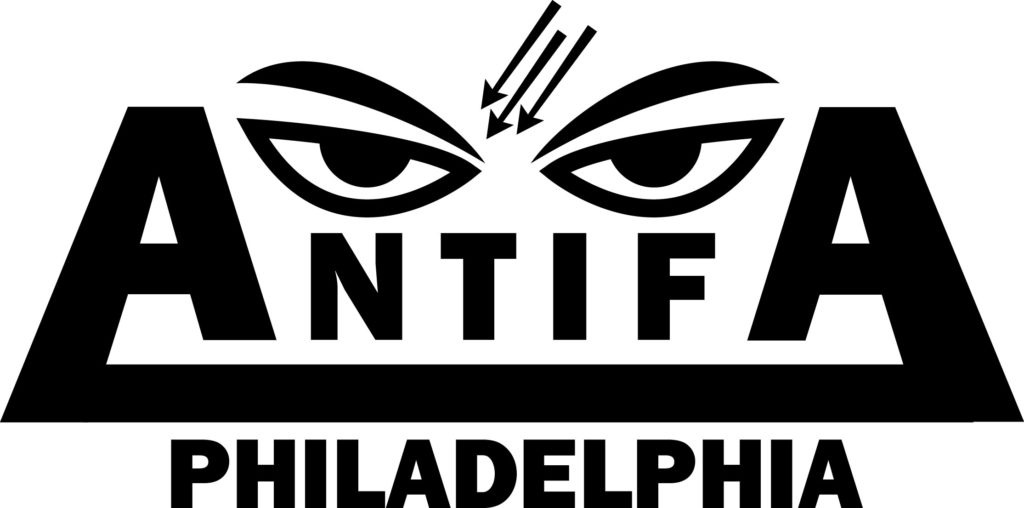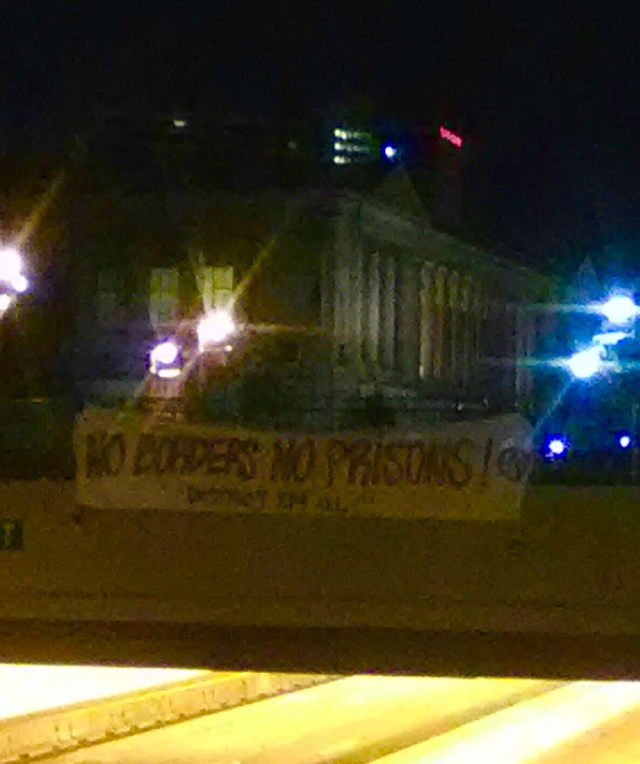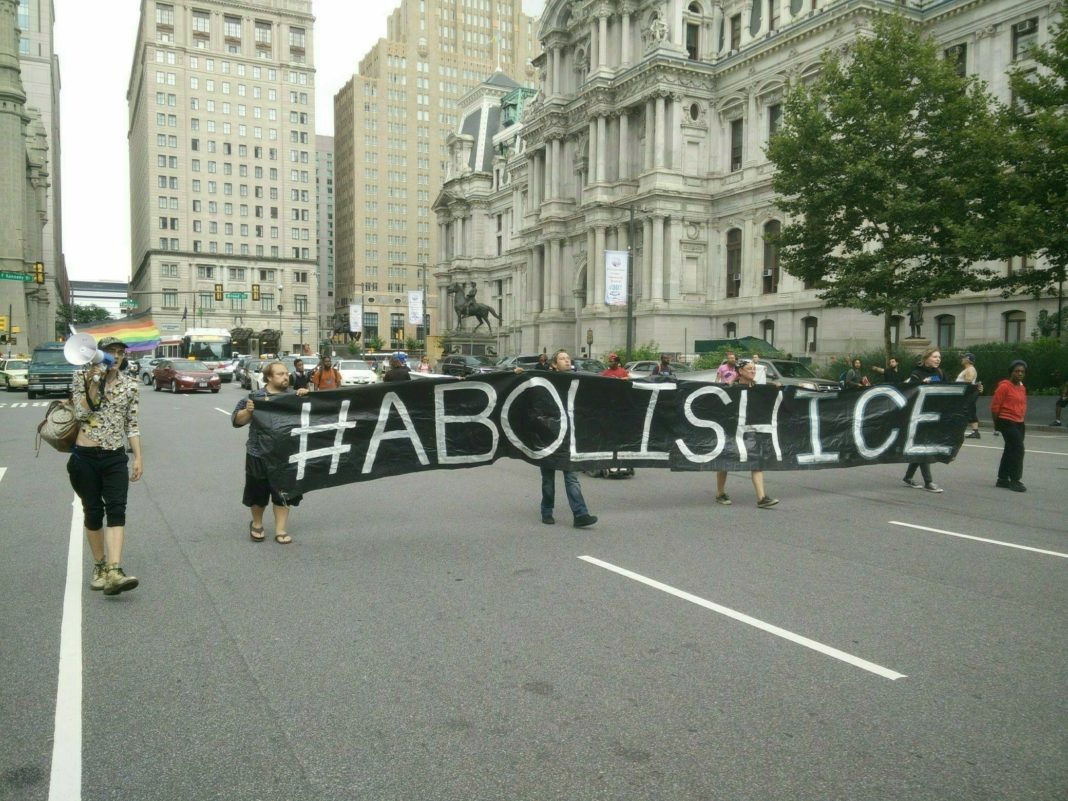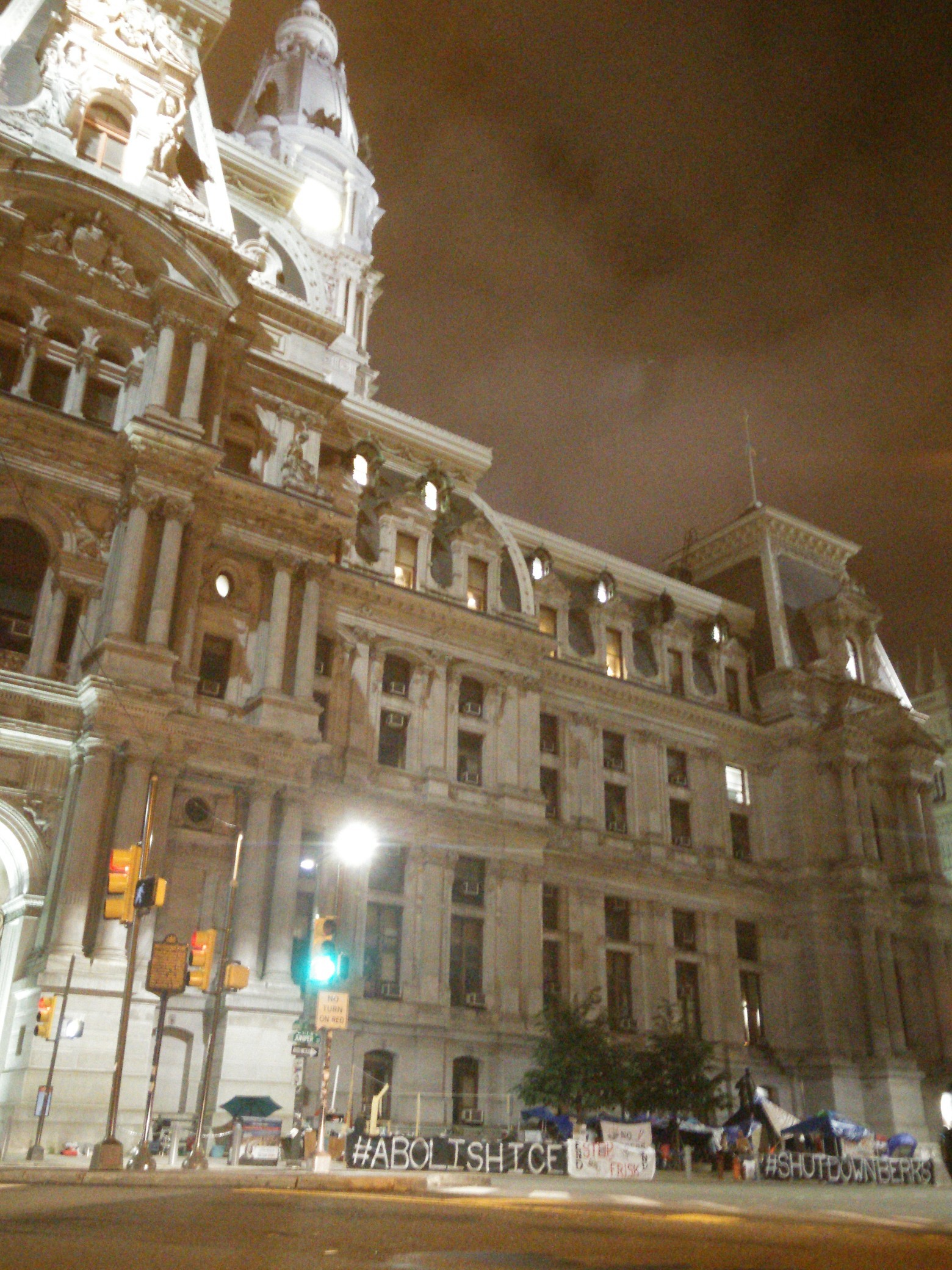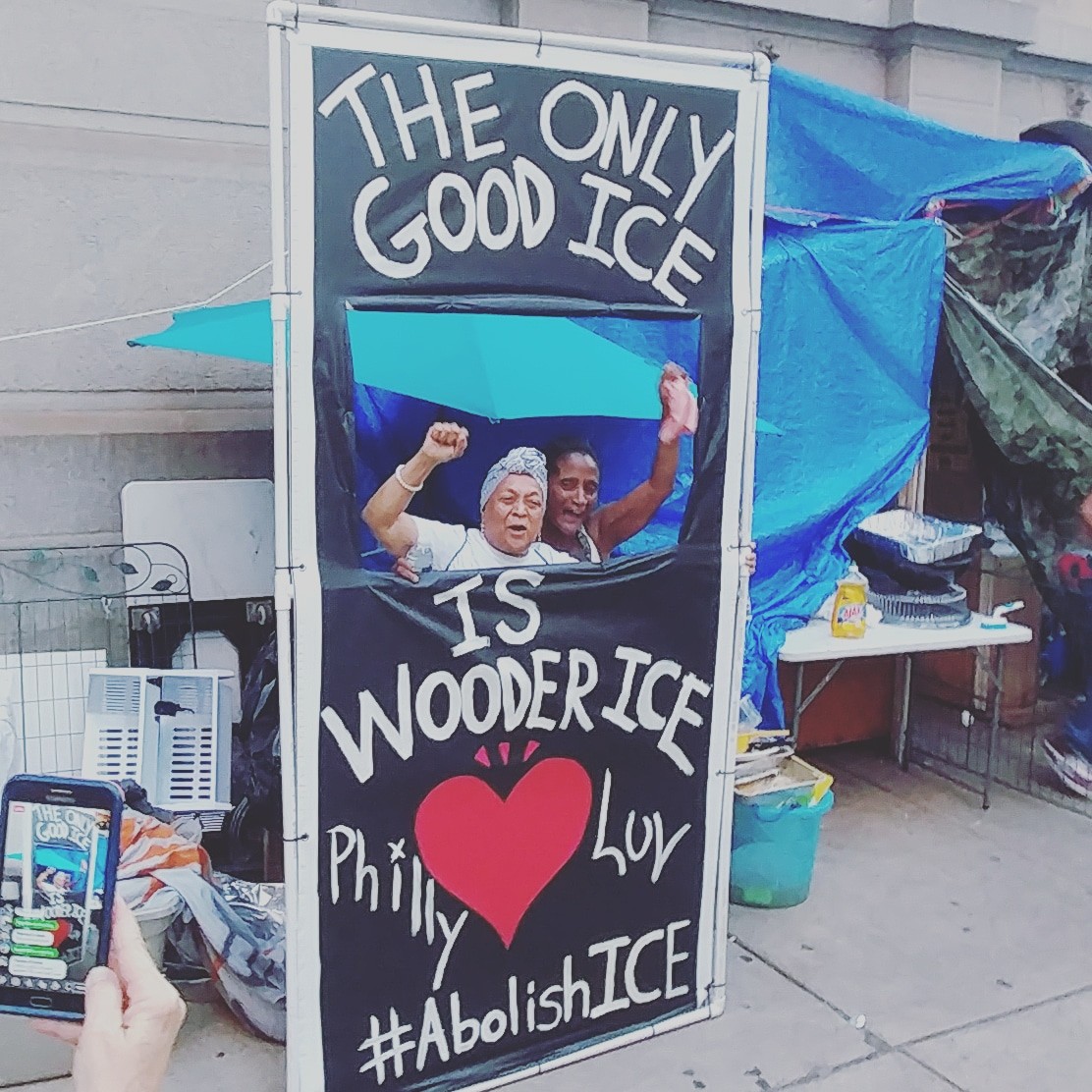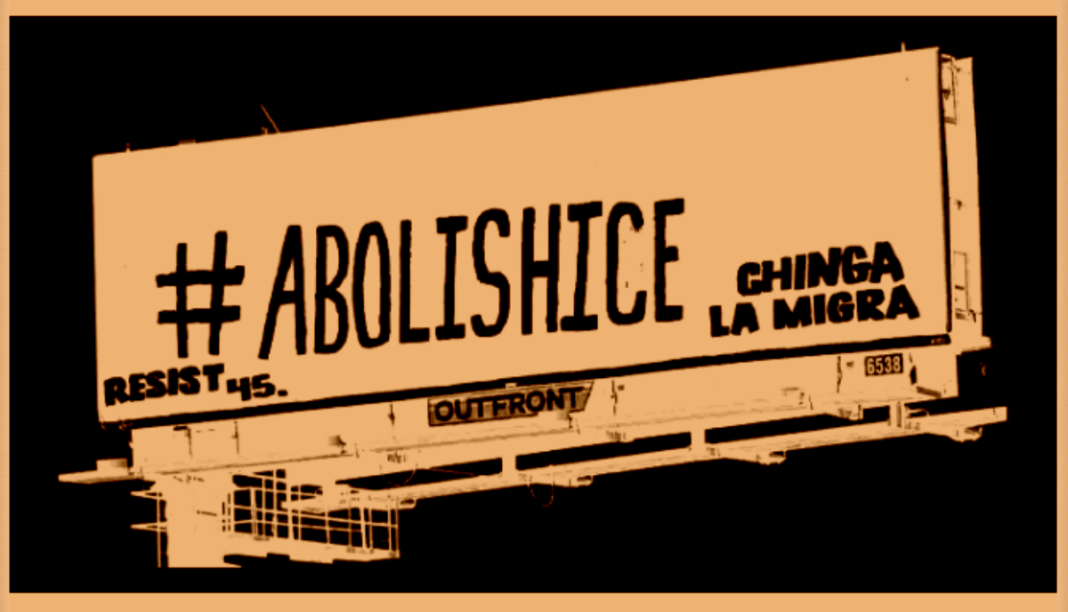from Philly Antifa
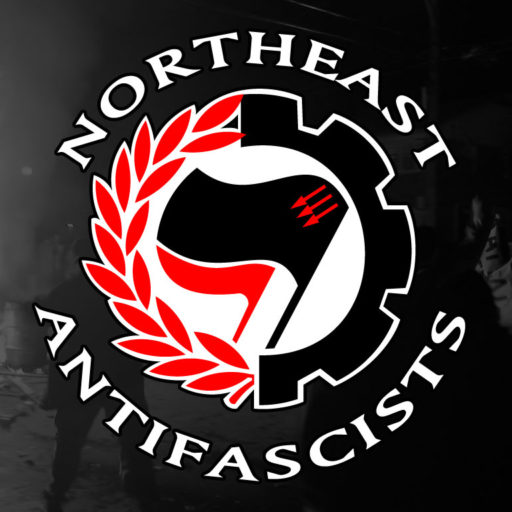
This has been a long time coming. For the next 30 days, every day, we will be profiling/exposing a member or supporter of Keystone United (KU) and Keystone State Skinheads (KSS). We will be largely concentrating on Pennsylvania fascists, with a few exceptions.
Every fall, KU/KSS comes to our city in secret and attempts to hold a march, rally and party to varying levels of success. They hold this event under the auspices of a “Leif Erikson Day Celebration.” Their logic being that Leif Erikson was (allegedly) the first “white” man (even though whiteness as a label was not a thing at the time, and Erikson would have considered himself Norse with no allegiance to Whiteness) to form a settlement in this hemisphere, and therefore began what they see as the rightful domination of these lands by the settler-colonial empires of Europe.
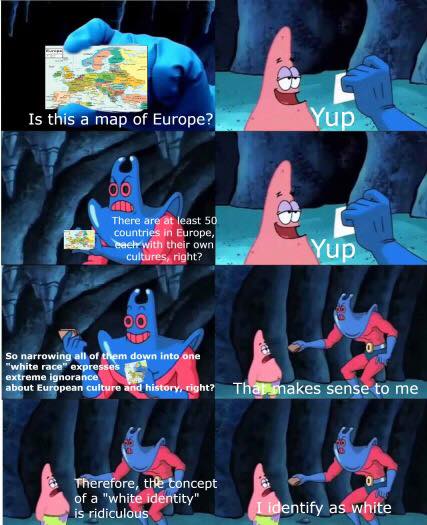
This year’s Leif Erikson day is October 9th, a month from today. The actual holiday, not the KSS rally, which they refuse to announce publicly anymore due to fear or mass opposition. Starting tomorrow, we will release a new article each day. We will be exposing KU/KSS members, former members, associates and supporters. We will reveal their homes, workplaces, criminal histories and other personal information.
Many of those we are exposing have gone to great lengths to hide their associations and cultivate a personable image, and the truth will likely be a shock to those around them. Many of them appear to be normal parents or friends, co-workers or neighbors, but moonlight in one of the most notorious neo-nazi organizations in the U.S. Keysone Untied especially loves to infiltrate general conservative circles and subtly move people more into the racist extreme or just normalize those ideas in the dialogues there.
We realize this is a controversial practice for some, so here is a brief summary of this group’s history and current activities to put it in perspective…
Keystone State Skinheads was founded in late 2001 at a Waffle House in Harrisburg, PA. KSS was part of a push to form state-based White Nationalist Skinhead crews in all 50 states that began in Indiana with the Hoosier State Skinheads, previously known as the Outlaw Hammerskins, who would later also go by the name Vinlanders Social Club and spread that brand around the country. Arizona (Canyon State Skinheads), Maryland (Maryland Skinheads aka MDS), and Ohio (Ohio State Skinheads) were just some of the other states where the idea found root.
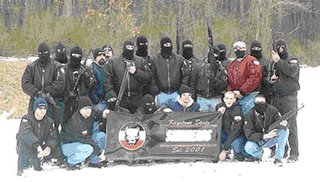
KSS was one of the more successful iterations of the statewide skinhead crew idea. Though they suffered an early defeat in York, PA in 2002, when Antifa and local residents teamed up to chase the nazis out of town, KSS persisted and picked up steam into the late 2000’s, when they engaged in several large rallies around Pennsylvania, including the 2008 Leif Erikson Day, which drew 70+ hardcore Neo-nazis from all over the country (at a time when rallies of that size were extremely rare), including members of the Vinlanders Social Club and Volksfront, groups that had previously been hostile to each other. During this period, KSS ramped up attacks around the state, including in Philly. Assaults, harassment and vandalism against left wing community spaces were common. Many pitched battles occurred in the Punk and Hardcore to keep KSS from gaining a foothold in Philly, as they had in many other cities in PA.
Also around this time, the KSS label was avoided in favor of “Keystone United,” which allowed KSS to organize with White Nationalists and Neo-nazis who did not meet the male skinhead criteria that KSS was founded under. Basically, all members of KSS can be considered members of KU, but only male bonehead members of KU can be “patched in” members of KSS. Outright Neo-nazi activities, such as the White Power show being organized for September 15th somewhere in PA, are organized as Keystone State Skinheads.
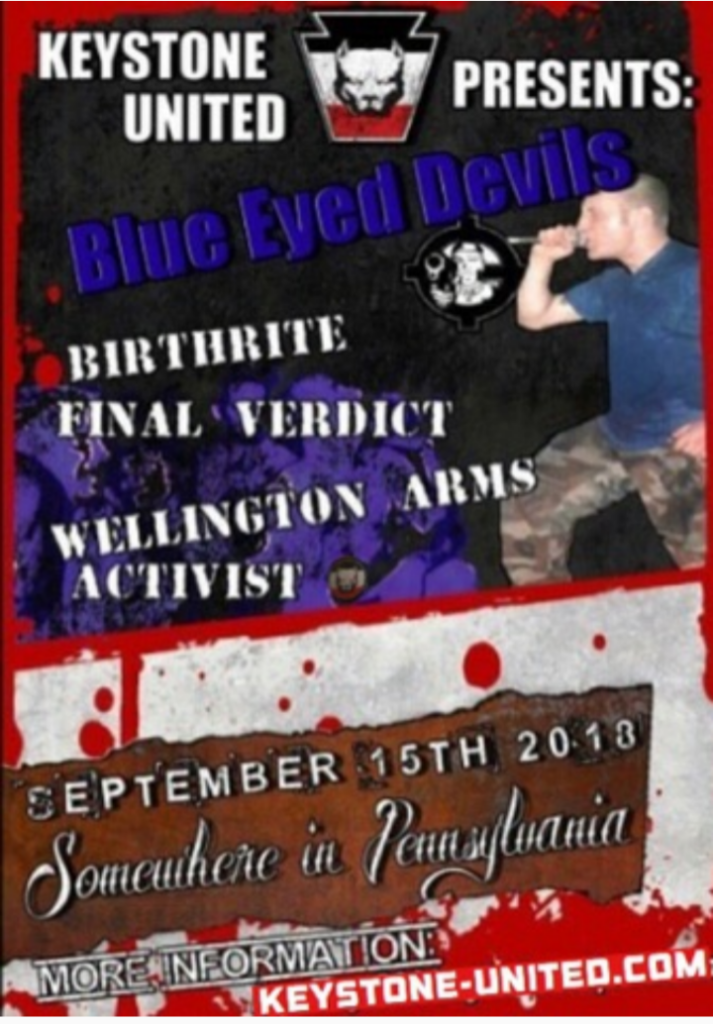
Political advocacy and demonstrations are organized as Keystone United. It is also a common strategy to “remove” anyone accused of a crime from KU, embracing them as KSS instead, allowing them to keep the image of KU sanitized for the media. For the forthcoming profiles, we will at different times refer to people as members of KSS and/or KU, but for all intents and purposes, the difference is a matter of public image, and the groups are essentially the same.
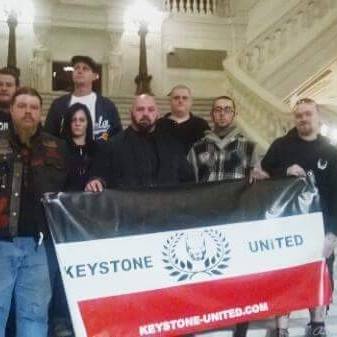
During this period, KU/KSS began to do things like bring dozens of neo-nazis to an NAACP organized community meeting in response to the vandalism of a synagogue in Wilkes Barre by nazi teens who were friends with members of KU, in order to intimidate opposition and dominate the discussion with the fruitless act of debating nazis. Keystone United also brought out a large contingent to support an Anti-Immigration rally in Harrisburg, and its members attended the National Policy Institute conference, for at least one year.
KU/KSS has strong ties with Matthew Heimbach, formerly of the Traditionalist Worker’s Party, and hosted a secret conference for Trad Worker’s “Traditionalist Youth Network” in Philly in 2016. Heimbach attended with Paddy Tartleton and several TWP members, but the bulk of the attendees were KSS/KU members.

The threat represented by KSS/KU is a dual one. Firstly, they engage in White Nationalist activism and political work. Steve Smith, a co-founder of KSS, is in his 2nd term as Republican Committeeman in Luzerne County. He was elected the first time as a write-in candidate, but campaigned for his 2nd term and gathered over 70 votes. He has been joined this term by KU member Ryan Wojitowicz, who was also elected to the same position. Keystone United actively campaigned for both candidates.
Not only has Luzerne County’s GOP neglected to try and campaign anyone against this nazi incursion, but both Keystone United members have become regular attendees at GOP party functions in Luzerne County. They are often joined by “Joe Mulligan,” a Pennsylvania KKK leader who is friendly with Smith, a former klansman.
Keystone United will also engage in political activism around issues of immigration, refugees, gun rights, and support for President Trump. They regularly participate in “Overpasses Across America” rallies on highway overpasses to protest against immigration and accepting refugees.
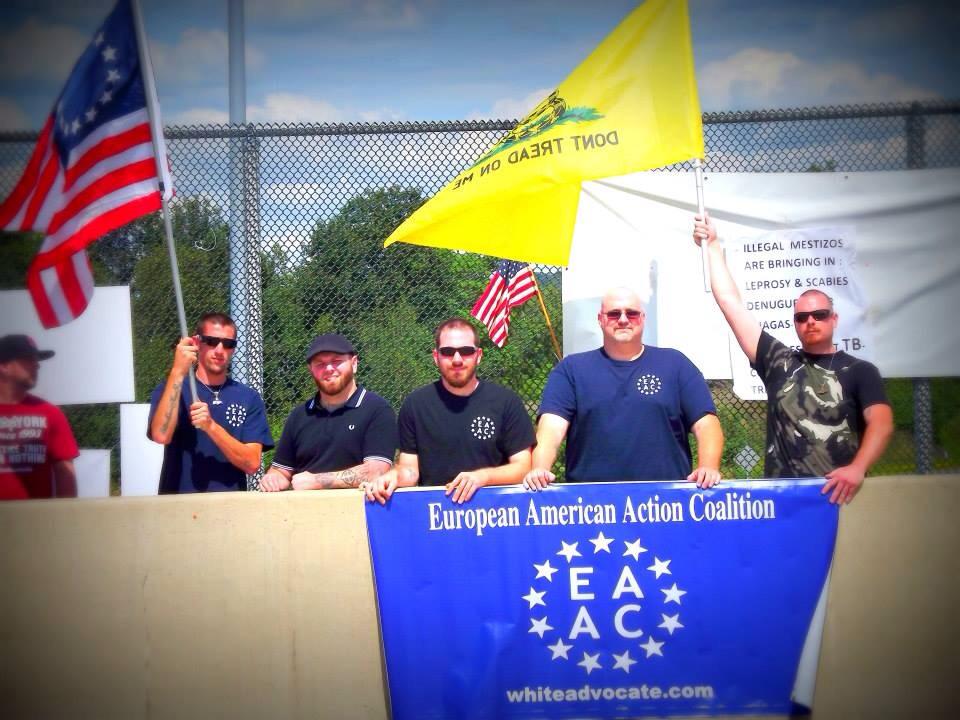
KSS is under the Blood and Honour USA umbrella, and have alliances with those crews as well as The Traditionalist Workers Party (until that groups implosion earlier this year) and the Pennsylvania State Militia (whom they have rallied with at Overpasses Across America events).
In late 2016 in Harrisburg, KSS members were in the area during a National Socialist Movement rally to provide security for the event since one of the speakers was Matthew Heimbach of the TWP. At the time both the NSM and TWP were members of “The Nationalist Front,” which, along with League of the South, Vanguard America (the group James Fields was marching with in Charlottesville 2017 before he plowed his car into a crowd of protesters, killing Heather Heyer and injuring many others) and other smaller nazi orgs.
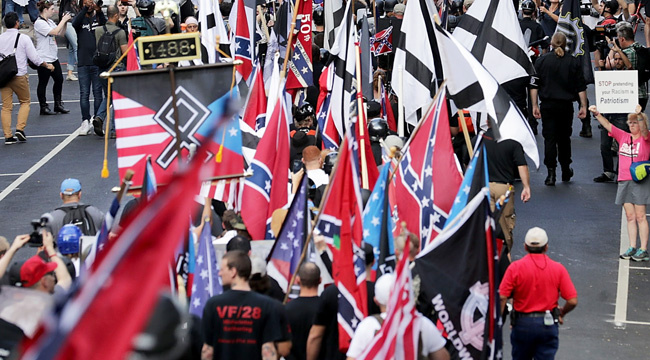
The Nationalist Front made up the single largest Fascist bloc at Charlotesville, and were heavily involved in the fighting that occurred. In the fallout of UTR1, The Nationalist front has been largely reduced to an NSM front, with the dissolution of TWP, the re-branding of Vanguard America to Patriot Front, and the recent departure of League of the South.
The second threat is that, behind the veneer of “gentle” white nationalism, KSS/KU is still a bonehead crew. In their over 15 years of existence, their members and supporters have been involved in countless acts of violence.
Here is a timeline of just some of the known attacks by KSS:
In June 2002, KSS members Robert Gaus, Douglas and Joseph Hoesch were arrested by police outside the Suburban Diner in Feasterville, near Philadelphia, for assaulting a man who asked them to stop throwing food at his table. The victim was struck several times and left on the diner’s floor. All three pleaded guilty to a charge of simple assault and were given suspended sentences
In September 2002, KSS members Todd Sager, Jason Hayden, and Christopher Keough, beat a former member, Christopher Morosko, who refused to return his KSS “colors”. The three pleaded guilty to assault on March 3, 2003, and were all released for time served.
On March 23, 2003, KSS members Keith Carney (Carney has since left KSS), Steve Smith and Steve Monteforte were arrested on ethnic intimidation charges in Scranton, Pennsylvania, for assaulting an African-American man who, according to police, was walking home in the early morning
In April 2003, two associates of the Lancaster Keystone State Skinheads were arrested and charged with ethnic intimidation and terroristic threats for making racist and threatening comments to three black patrons in a Lancaster-area bar.
In January 2006, KSS members Edward Robert Locke and Todd Clair Sager were charged with multiple counts in connection with a violent bar fight in March 2005 in New Stanton. Police claim Locke stabbed two men. Locke was charged with attempted homicide and four counts of aggravated assault while Sager was charged with criminal solicitation to commit homicide and criminal solicitation to commit aggravated assault.
Also in 2006, KSS members attacked several Anti-Racists outside a show at Mojo 13 (bar name later changed) in Delaware.
In January 2007, KSS members Kenneth Hoover and Charles Marovskis were arrested for beating two homeless men to death in Tampa, Florida in 1998. Hoover pleaded guilty to second-degree murder and racketeering. Charles Marovskis, of West Pittston, Pennsylvania, but originally from Tampa, Florida, pleaded guilty to two federal charges of second-degree murder.
In October, 2007, KSS members attacked Anti-Fascists down the street from a Floorpunch Show at first Unitarian Church in Philly, injuring 3 before fleeing.
On September 7, 2008, Philadelphia police officers arrested KSS member Andrew Boyle at a Philadelphia bar for being in possession of a knife. At the time of his arrest, Boyle was out on bail, awaiting trial on another matter. Boyle, along with co-defendants and fellow KSS members Carney and Doug Caffarella, and Atlantic City Skinhead Vincent DeFelice, were charged with assault and conspiracy in the alleged attack of another skinhead outside a Philadelphia bar in 2007.
In May 2014, KSS associate Vincent Pellegrino, brother of KSS member Nunzio Pellegrino, sexually assaulted a woman and stole her car, crashing it into a wall while being persued by police. Pellegrino died at the scene.
In October 2017 following their disrupted attempt to rally in Philly’s boathouse row, 10 KSS members attacked 2 Anti-Fascists in FDR park, injuring them both before aborting their party and fleeing the scene. KSS went on to celebrate the event with their event t-shirt.
In July 2018, 6 members of KSS were charged for attacking a Black man at a bar in Avalon, PA. According to the victim, KU members told him they were going to exterminate Black People “one by one” and called him the N-Word. They also injured an employee who tried to intervene. Others were involved, but the 6 charged were Natasha Dawn Bowers, 33, of Roaring Spring; Terrence Raymon Stockey, 40, of Beaver; Jeremy L. Ingram, 35, of Hollidaysburg; Travis Lee Cornell, 43, of Marianna; Crystal Lynn Shields, 23, of Tarentum; and James Edward Kryl, 45, of Pittsburgh’s North Side.
Just a few weeks ago, KSS associate and KU member Christopher Croumbley attacked an Anti-Racist outside the chameleon club in Lancaster for wearing clothing identifying themselves as Anti-Fascist.
It is worth considering that there is a pattern of high profile violent incidents, (which we assume to occur at times when non-reported acts of violence are at a peak) occurring at times when Keystone United’s “respectable white advocacy” is also more active. After the departure of a major organizer in the late 2000’s, Keystone United went relatively dormant for a few years and so did reports of violent attacks by it’s members. This flies in the face of the claim that allowing nazis in the public space for debate will redirect their energies and minimize violent assaults and murders. As nice as it would be to just let them “talk it out of their system,” when nazis and Fascists feel legitimized in the public sphere, they are emboldened, and attacks increase.
In addition to outward violence and their attempts to gain state power to enact large scale violence, KSS/KU is involved in fostering a Neo-nazi subculture in Pennsylvania that is larger than the group itself. They have organized Neo-nazi music festivals, usually in conjunction with Label 56, run by Rick Haught of Maryland Skinheads, including the “Uprise Festival,” which ran for several years, and shows by The Blue Eyed Devils, Aggravated Assault, and other popular Neo-nazi bands. They are hosting another Blue Eyed Devils show somewhere in PA on September 15th. The Blue Eyed Devils’ song titles include:
Bomb the Cities
Beating and Kicking
Hate Filled Mind
We Will Fight
Final Solution
Holocaust 2000
White Violence
Which feature lyrics such as :
During German nights and days
Adolf Eichman would lead the way
For the cause of White salvation
Victory, for our race and nation
The plan has started, no turning back
From the entire world, you’re under attack
A New Worlds Order for the Aryan man
Regain control of the European landsToo many problems, too many lies
Too much of what you despise
Implement the only plan
Eradicate the so-called chosen man
The final solution!
White revolution!
This is a group with 2 Pennsylvania GOP politicians as members, promoting the show on their blog, alongside long articles claiming to be “white advocates” who “are like the NAACP for white people.” Who do these nazis think they are fooling… you?!
KSS makes it policy to show up at European heritage celebrations, St. Patrick’s day parades, and similar events. They do this both to recruit, and to normalize their presence in those spaces, making it harder to dislodge them later.
Each forthcoming article will come with a call to do some small action to make that KSS member’s life as a nazi a little bit harder. When it’s hard to be a nazi, some of them find a reason to quit. Others can’t do it as well as they had been. It creates divisions. Victories make them grow, defeats make them shrink.
Take the time to call their employer and demand they be fired. KSS has largely survived based on the ability for their members to travel around the state to swell numbers as needed. Gas is expensive. If the call is to help us get more info, ask your friend who is good at research but isn’t necessarily plugged into this world. If we mention that they hang out in certain places or areas, and you feel like you can do it safely, make up some flyers and post them around so that they have no anonymity. Someone should not be able to attack someone for their race on Saturday, then walk their dog to the park Sunday with no repercussions. We may feel better being ignorant of the nazi down the street, but it doesn’t actually make as any safer. Quite the opposite.
So remember to check back on the site every day. We are striving to put out each article first thing each morning, but it may be later some days. While standing our ground, defending ourselves, and physically shutting down Fascists in the street is an indispensable and crucial part of this work, the next 30 days is about showcasing how much we can do to disrupt neo-nazi organizing using research and communication.
Nowhere to hide for nazis,
